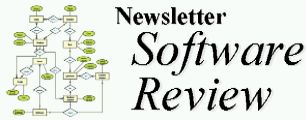 | |||||
|
[ home | reviews | bylaws | library ]
View all our book reviews. Or, view our Software, hardware, and game reviews.
by Stan Horwitz Review Date: January 2006
Disclaimer: Due to the nature of this product, I feel obliged to say that I am not a professional photographer. Since Apple is marketing Aperture as a tool for professional photographers, I am not the type of user Aperture was designed for. Let's cut to the chase: Aperture has some great features and a superb user interface, but it has serious problems. I obtained Aperture at a discount through my employer; however, the $499 retail price is too high for what it does. At $150 per copy, Aperture would be reasonably priced, but $499 is outrageous for what Aperture does, especially for a buggy product with some major failings for its target audience. Installation: Installation involved logging onto my administrator account, which I know some people object to. The installation process was easy and problem-free. As soon as I started Aperture, it asked me to register it online. I did so. Registration was easy. Next, a window appeared and offered me several input options. I used the option to import my iPhoto 5 library. The import process took about two hours for 2,500 images. What is Aperture? In October, when Apple announced Aperture, it emphasized that Aperture is not an alternative to Photoshop CS. After using it, I can see why. The best way to describe Aperture to the average Mac user is to say that it is iPhoto on steroids. Aperture is a pro version of iPhoto. Aperture's user interface is a lot more robust than iPhoto 5's. One of Aperture's nicest features is the way it allows you to view a large version of an image while still seeing a preview panel with thumbnail versions of your other images, as illustrated on the next page. The best way to describe Aperture to Photoshop users is to say it is like Adobe's Bridge program on steroids. Aperture brings together a lot of functionality that was unique to Adobe's Bridge program and iPhoto 5. For serious digital photographers, the three most important features in Aperture are its raw image file processing capability, its project oriented workflow tools, and its ability to back up data to an external hard drive. You may have already read reviews of Aperture. Most reviews I have read give Aperture poor marks. After using Aperture for a few hours with my own photos, I can see why some reviewers have panned it. Aperture is intended to work alongside Photoshop, not as a replacement for Photoshop, but it does not play nicely with Photoshop CS 2. If you are familiar Adobe's Bridge, you will see a few similarities between it and Aperture. Aperture uses a project oriented work flow, unlike iPhoto 5 and Adobe Bridge. In Aperture, you can set up separate projects to work on sets of related photo images or to work on several versions of an individual image. Like iPhoto 5, Aperture has several image adjustment tools, but nowhere near as many as Photoshop CS 2, or even Photoshop Elements. Apple says Aperture is a tool for raw image files; but, it also works fine with jpeg files.  Aperture's graphical user interface (GUI) is great! An image of Aperture's GUI appears above. As you can see, the GUI is composed of five main areas. The left area is similar to iPhoto 5 where albums, rolls, and projects are listed. The top center region is where the photos you are working on are displayed. Beneath that area, there's a preview area with thumbnails of photos in your project. The right side of the interface is where the main image adjustment and metadata tools are located. Aperture's image editing tools are more sophisticated than iPhoto 5's tools and it handles raw image files much faster than Photoshop CS 2. You can also toggle between an original and any version of an image. This is a great feature. All edits to an image are non-destructive so if you don't like changes you make to an image, all you have to do is use another version or to the master file. I suspect Apple wants professional photographers to use Aperture instead of Adobe Bridge; but, due to problems with the way Aperture works with Photoshop CS 2, Apple has made a huge mistake in its plans for Aperture. If you use Aperture with Photoshop (which is what most users will want to do), Aperture cannot see your Photoshop layers in some circumstances. You must flatten your Photoshop images in order for Aperture to see the full image. This is a major shortcoming. Aperture also has difficulty handling the raw image files that were shot with my Canon Digital Rebel while iPhoto 5 handles them just fine. The thumbnails for many raw image files were represented by solid gray boxes in the preview area rather than showing image icons. Clicking on one of these gray icons revealed an error message that said "unsupported format." I could not believe that Aperture did not support one of the most popular 35mm dSLRs on the market so I started my quest for a solution. After reading a few articles in Apple's online Aperture forum, I did not find a solution to this raw image issue. A Google search pointed me to an article that discussed the problem. Eventually, the gray thumbnails were replaced by preview icons. This happened only on a few raw image files, while several other raw image files had no problem at all. Due to Aperture's high price tag, but not handling raw image files correctly, and its poor interaction with Photoshop CS, I feel obliged to give it a low rating. Aperture has a lot of potential and it may be better received if Apple addresses the way it works with Photoshop and halves the price. I definitely like how much faster and easier Aperture handles raw images than Photoshop's raw plug-in.
View all our book reviews. Or, view our Software, hardware, and game reviews. [ home | newsletter | past | join | listserve | shareware | directory | links | md9 ] © 2005 by Stan Horwitz & MLMUG |
|||||

